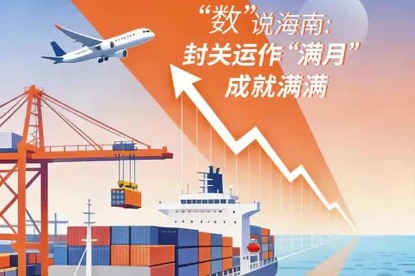Big Four to up lending in H2, stabilize growth
By JIANG XUEQING | China Daily | Updated: 2022-09-02 09:02

China's four largest State-owned commercial banks-the Big Four-will step up countercyclical credit extension in the second half to help stabilize economic growth and continue to optimize their credit structures by allocating more financial resources to key fields and weak links of the economy, said senior executives of the banks.
Liao Lin, president of Industrial and Commercial Bank of China, said the lender will see a higher increase in credit extension year-on-year in the second half and for the full year of 2022.
ICBC will ramp up corporate lending, provide ancillary financing to major infrastructure projects, and give stronger support to key fields of the economy, including the manufacturing sector, technology startups, green finance and inclusive finance, said Liao at a recent news conference announcing the bank's 2022 interim results.
At the end of June, ICBC's domestic renminbi loans increased by 1.61 trillion yuan ($233.34 billion) from the end of last year. In the same period last year, the increase was 1.26 trillion yuan. So, this year's first-half rise was 346.5 billion yuan higher.
Similarly, Bank of China will also enhance efforts to realize a higher year-on-year growth of domestic RMB loans for the full year, said Lin Jingzhen, executive vice-president of BOC.
"We will ramp up financial support for major infrastructure projects in the areas of transportation, energy, water conservancy, 'new infrastructure' and China's new-type urbanization, and allocate more credit resources to projects that are in line with the nation's policy orientation, including carbon emissions reduction, technological innovation and green development projects," said Lin on Wednesday.
As of the end of June, BOC's RMB loans and advances to customers totaled 13.78 trillion yuan, an increase of 1.02 trillion yuan compared with the prior year-end. Specifically, technology finance loans grew by 17.21 percent, loans granted to strategic emerging industries rose 67 percent, manufacturing loans went up 15.64 percent, and outstanding inclusive finance loans granted to micro and small-sized enterprises surged 25.36 percent, according to the bank's 2022 interim report.
Gu Shu, chairman of Agricultural Bank of China, said ABC is highly likely to see its credit growth between September and December exceed that of the same period last year.
In July, RMB loans of ABC increased 168.1 billion yuan, 37.8 billion yuan more than the increase in July 2021. In contrast, China's RMB loans to the real economy registered an increase of 408.8 billion yuan, 430.3 billion yuan less than the growth in the same month last year, said the People's Bank of China, the central bank.
"The decline in China's RMB loans to the real economy in July was mainly due to weak expectations for the housing market. In the long run, however, it would likely prove to be a fluctuation during the process of the Chinese economic transformation and does not necessarily represent a trend. With a suite of policies supporting economic stabilization, effective investment will expand steadily, and consumption and housing market expectations will be stabilized gradually," Gu said.
The Chinese economy has been facing fairly high downward pressure since the beginning of this year due to internal and external factors that exceeded market expectations. The State Council, China's Cabinet, launched a package of policies in a timely manner to promote an economic rebound, said Zhang Jinliang, president of China Construction Bank.
"Taking the medium- and long-term view, the Chinese economy is still resilient, and economic fundamentals that will sustain long-term growth remain unchanged. We believe it will overcome temporary difficulties and fluctuations," Zhang said.
As of the end of June, the balance of CCB's loans to the infrastructure sector went up 8.02 percent from the end of last year to 5.47 trillion yuan; loans to strategic emerging industries rose 26.66 percent to 1.17 trillion yuan; and loans to science and technology enterprises increased by 30.07 percent to 1.14 trillion yuan.
























